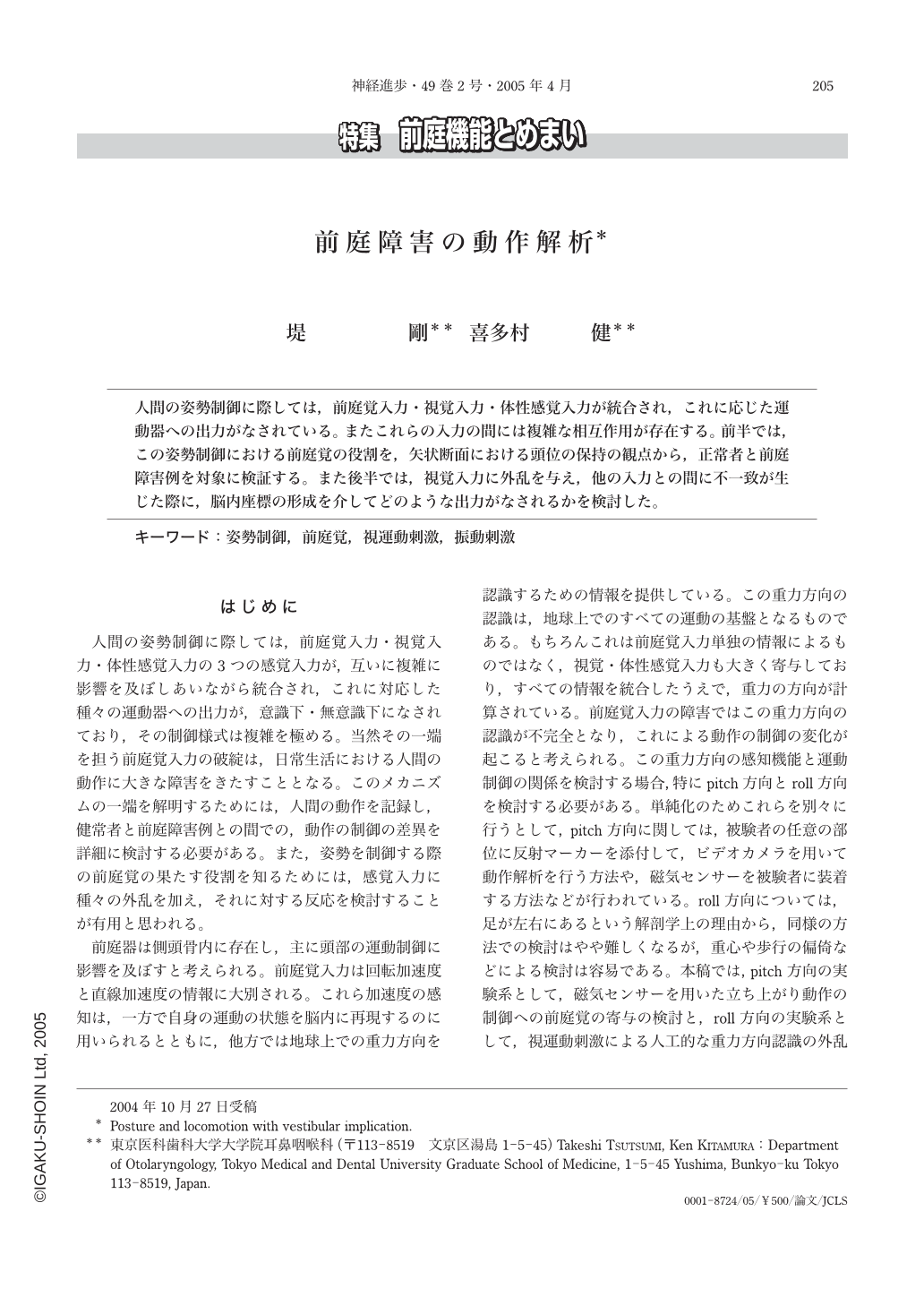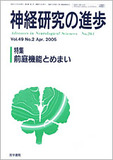Japanese
English
- 有料閲覧
- Abstract 文献概要
- 1ページ目 Look Inside
人間の姿勢制御に際しては,前庭覚入力・視覚入力・体性感覚入力が統合され,これに応じた運動器への出力がなされている。またこれらの入力の間には複雑な相互作用が存在する。前半では,この姿勢制御における前庭覚の役割を,矢状断面における頭位の保持の観点から,正常者と前庭障害例を対象に検証する。また後半では,視覚入力に外乱を与え,他の入力との間に不一致が生じた際に,脳内座標の形成を介してどのような出力がなされるかを検討した。
In our daily life, certain amount of postural control strategies were executed. To control our body, we've got the afferent information from vestibular, visual and proprioceptive apparatus. These information was mutually interacted and integrated to make up the internal model of the space.
In a first paragraph, we verified the contribution of the vestibular input to postural control performance, from a viewpoint of control in a sagital aspect. That has revealed the role of vestibular input to keep their head stable according to gravity, even with their body moving. In addition, not only the peripheral vestibular dysfunction, we investigated how central disorder could be compensated by the postural control system.
In a second paragraph, we employed a neck muscle vibration(proprioceptive external force)to subjects, and examined what would occur to the direction of center of pressure leaning by the adaptation of optokinetic stimulation. That could provide a possible way of how visual input can contribute to constitution of an internal model.

Copyright © 2005, Igaku-Shoin Ltd. All rights reserved.


